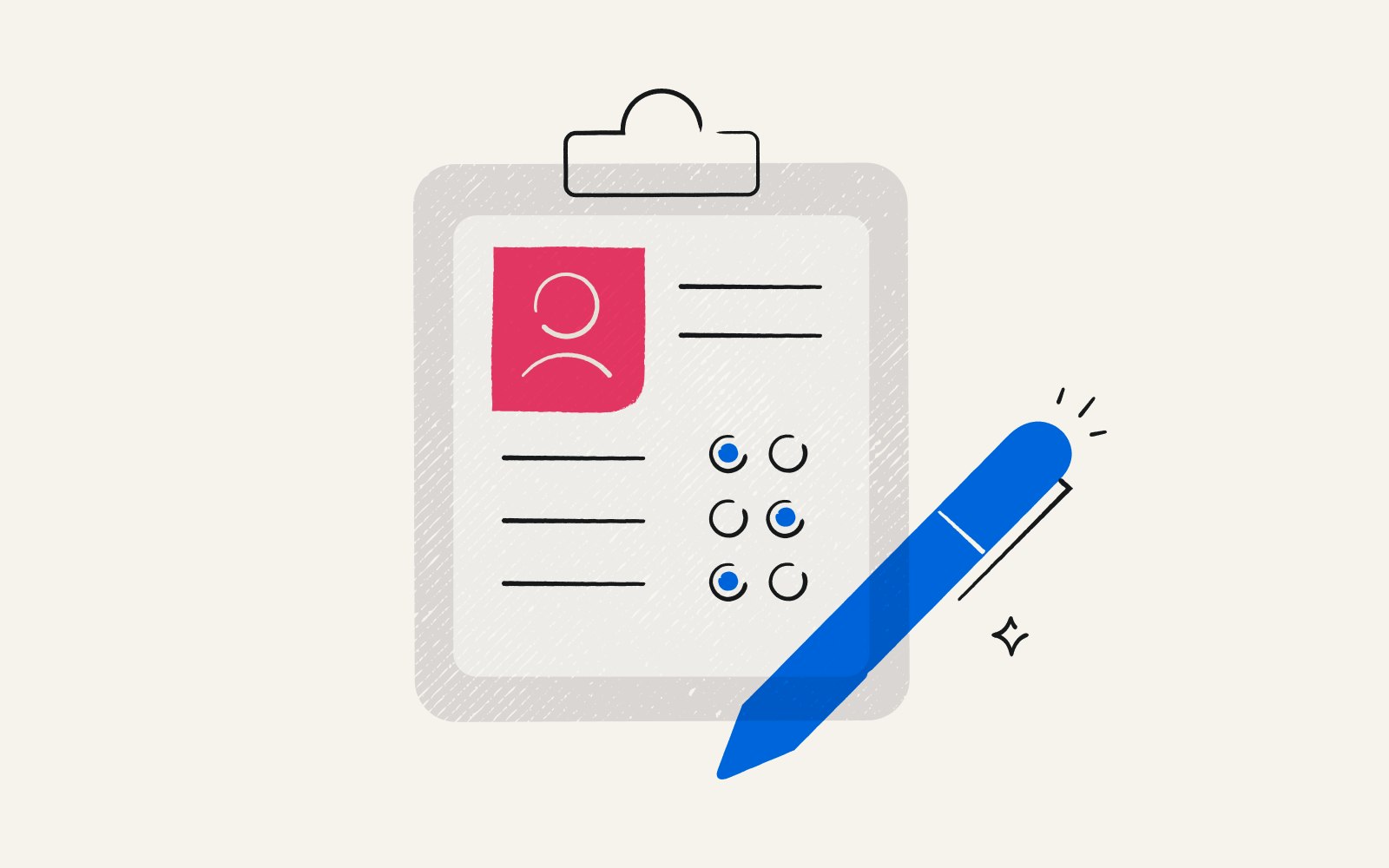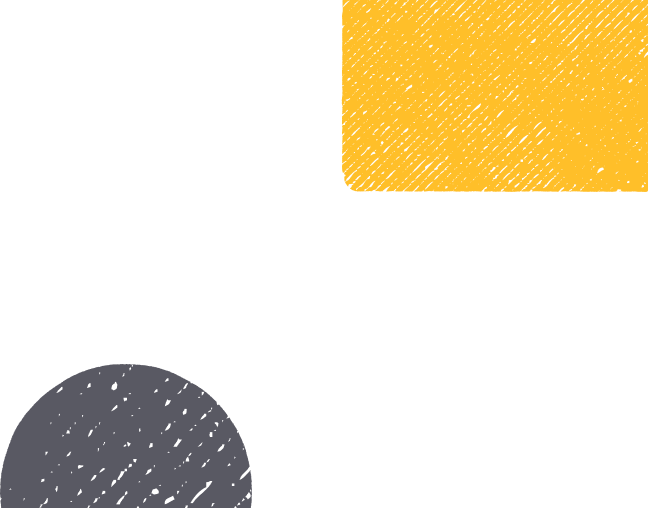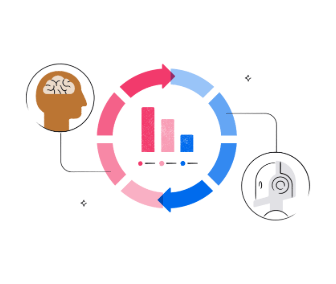What is customer profiling in market research?
By Laura Ojeda Melchor●7 min. read●Nov 24, 2025

Customer expectations are at an all-time high. Today's consumers want products and services that speak directly to their needs, and with more competitors in the market, they can switch brands if they don't get them.
To keep up, businesses need deep insights into who their customers actually are. That's where customer profiling comes in.
This article breaks down what customer profiling means for market research teams and how to build profiles that drive better business decisions.
What is customer profiling?
Customer profiling is the process of grouping customers into segments and building data-rich profiles that describe who they are, how they behave, and what they need.
In market research, customer profiling turns surveys and behavioral data into actionable groups businesses can target with products, campaigns, and messages.
Beginner's guide to customer profiling
Now that you understand what customer profiling is, let's break down the three-step process to creating customer profiles.
Audience segmentation: Divide your target audience and existing customer base into groups. There are four main categories: demographic, psychographic, geographic, and behavioral. We'll cover these in more detail later.
Customer profile creation: Once you've identified your audience's characteristics, organize the data into a document or database that presents a high-level overview of your customers.
Buyer persona building: Create semi-fictional snapshots of individual customers within each segment. Built from market research and real customer data, each persona outlines the goals, challenges, and behaviors of a single person who represents a target segment.
Consumer profiling vs. customer profiling
While these terms are often used interchangeably, they serve different purposes in market research:
|
Consumer profiling |
Customer profiling |
| Focus: Potential buyers in B2C markets | Focus: Existing customers and prospects across B2C and B2B |
| Scope: Pre-purchase behavior, media habits, lifestyle preferences | Scope: Full customer journey including post-purchase behavior |
|
Use case: Identifying new audiences for advertising and media placement |
Use case: Understanding and retaining customers, calculating lifetime value |
|
Data sources: Market research, third-party data, social media insights |
Data sources: CRM data, purchase history, support tickets, survey responses |
|
Output: Media targeting segments and advertising personas |
Output: Comprehensive profiles for product development and retention strategies |
For example, some examples of consumer profiles include:
Urban Millennials prioritizing sustainable brands
Budget-conscious parents shopping for bulk groceries online
Health-focused Gen Xers who buy premium fitness products
Tech-savvy seniors exploring digital banking services
Teachers researching educational toys and STEM activities
Why is customer profiling important?
Customer profiling helps businesses put themselves in their customers' shoes. When you know who your customers are and what they want, your research team can help business stakeholders:
Target marketing campaigns more effectively: When you understand different groups of customers, you can create tailored campaigns that resonate with each group instead of generic campaigns that don’t resonate.
Create products people actually want: Customer profiling provides data-backed insights into what motivates purchases. With this information, product teams can build new offerings based on real customer needs instead of assumptions.
Improve the customer experience: Knowing what customers value and what frustrates them helps stakeholders throughout the organization optimize every touchpoint. When customers have a smooth experience, they're more likely to come back.
Stay ahead of competitors: Understanding customers better than the competition gives teams an edge, helping them make smarter choices about where to sell products, how much to charge, and what features to highlight.
Customer profiling and segmentation: Core data types
Effective customer profiling starts with understanding the different types of data you can collect about your target audiences.
Customer profiling vs. customer segmentation
Before diving into segment types, it's important to understand how profiling and segmentation work together in market research:
Segmentation groups customers by shared characteristics (demographics, behaviors, location)
Profiling builds detailed descriptions of each group (needs, preferences, buying patterns)
Segmentation identifies the groups, while profiling brings them to life.
There are four primary segments used in customer profiling, plus three bonus segments research teams can use to understand specific customer bases.
Primary: Demographic
Demographic segmentation groups customers based on demographic information. This includes age, gender, income level, education, occupation, marital status, and family size. This data is a great starting point for understanding who customers are.
Primary: Geographic
With geographic segmentation, companies divide their target audience based on physical location. This could range from broad categories like countries and cities to more specific ones like neighborhoods or zip codes. It helps businesses tailor their products and marketing strategies to local preferences, climates, and cultural factors.
Primary: Psychographic
Customer lifestyles, interests, values, attitudes, and personalities impact buying behaviors. Psychographic segmentation helps you explore these factors. This segmentation method goes deeper into understanding what motivates consumer behaviors. It helps companies create products and campaigns that resonate on a personal level.
Primary: Behavioral
Behavioral segmentation is most helpful when you already have a solid baseline understanding of a customer base. You can group customers based on purchasing habits, product usage, spending patterns, and loyalty. With this information, business stakeholders can create custom offers that match a customer's stage in the buying journey.
Secondary: Technographic
Technographic segmentation is relatively new. It segments customers based on which types of devices and software they use. Technographic segmentation is especially helpful if you offer digital products and services.
Secondary: Needs-Based
Needs-based segmentation involves grouping customers based on their specific needs and requirements. The goal is to solve the problems that lead customers to seek out products or services in the first place.
Secondary: Firmographic
For B2B companies, firmographic segmentation is a must. It categorizes businesses and organizations based on shared company or industry attributes. This includes industry type, company size, revenue, number of employees, and geographic location. It's key for creating products and marketing messaging that click with specific types of businesses or sectors.
How to create a customer profile
Building accurate customer profiles requires systematic research and validation. Here's a step-by-step process to create profiles that drive impactful results for your business partners.
1. Define your profiling goals
Start by clarifying what your stakeholders want to achieve with customer profiles. Are they refining ad targeting? Improving product-market fit? Designing new campaigns? Your project goals determine what data you need and how detailed your profiles should be.
2. Collect customer data through research
To build a complete picture of customers, gather data from multiple sources including:
Primary research: Surveys, interviews, focus groups, and diary studies
Third-party panels: External panel data to supplement primary sources
Digital behavior: Web analytics, CRM data, and customer data platform (CDP) analytics
Purchase history: Transaction data, order frequency, and average order value
3. Segment your audience systematically
Apply core segments to group customers with shared characteristics. Start broad, then narrow down to meaningful segments that align with your stakeholders’ business goals.
For existing customers: Take a look at the customer base. What characteristics can you identify? If customers are individuals, dig deeper into demographics: age range, gender, and professional status. For B2B buyers, identify company revenue, employees, industries, and buying committee roles.
For new businesses: Consider who the product is for and validate stakeholder assumptions with research.
4. Analyze patterns and behaviors
Examine data to spot patterns across a customer base. Look for similarities in how different groups interact with the brand. Customer relationship management (CRM) tools can help you manage and analyze this data.
5. Build detailed customer profiles
Create a structured profile for each segment that includes:
Demographics: Age, income, education, location
Psychographics: Values, interests, lifestyle
Behavioral data: Purchase patterns, brand loyalty, channel usage
Needs and pain points: Problems they're trying to solve
Preferred channels: Where they consume content and make purchases
Key messages: What motivates them to take action
6. Create buyer personas for high-value segments
Transform profiles into actionable personas for your stakeholders’ most valuable segments. AI tools can help speed up this process.
Here’s a sample buyer persona created with ChatGPT for a Gen Z outdoor enthusiast.
Persona Name: Outdoor Enthusiast Emma
Age: 18-25
Location: Northeast United States (e.g., Connecticut, Delaware, Maine, Vermont)
Lifestyle and interests:
Emma spends 10+ hours weekly outdoors, exploring the diverse landscapes of the Northeast. Whether it's hiking through the foliage or enjoying the coastal beaches in summer, Emma makes the most of every season.
She balances work and school with her love for the outdoors. If she can't go for a hike, she'll study by the beach or in her favorite park.
Spending habits:
Emma allocates $50-$100 monthly on outdoor wear. She prioritizes functional and affordable gear that keeps up with her active lifestyle and seasonal needs.
As she progresses in her career and earnings increase, Emma will likely shop more. She plans to stay loyal to brands that supported her early outdoor adventures.
Shopping preferences:
Emma shops primarily via smartphone, using apps to find deals and new products.
Responsive to email marketing, she appreciates receiving discount codes and special offers, especially for budget-friendly products that match her needs.
Product preferences:
Emma gravitates towards products that offer value and performance, like a light, durable rain jacket under $100. While she admires higher-end items like wool peacoats, her current focus is on gear that meets her immediate outdoor needs within budget.
She values special deals and discounts, particularly during holiday weekends when she’ll consider mid-priced items.
Key takeaway: Emma represents a vibrant, youthful demographic that values the outdoors and seeks to blend adventure with everyday life. She seeks brands that understand her passion for nature, her need for affordability, and the convenience of mobile shopping. She's a promising loyal customer, with potential for increased spending as her financial situation improves.
Once you have a draft persona, build it out even further with research-backed details like customer quotes, specific brand preferences, and validated pain points.
7. Validate and refine with performance data
Once you’ve finalized customer profiles, have your stakeholders validate them against real-world results. Conduct follow-up research to validate assumptions, then update profiles using new data and changing customer behaviors. The best profiles evolve with customers.
Customer profile research methods
Successful customer profiling requires using the right research methods to gather accurate, actionable data. Here's how to choose and implement research techniques that deliver meaningful insights.
Qualitative research methods
Qualitative research reveals the "why" behind customer behaviors and preferences. These methods provide more detailed insights that numbers alone can't capture.
In-depth interviews: One-on-one conversations that explore customer motivations, pain points, and decision-making processes. Ideal for uncovering unexpected insights and testing assumptions.
Focus groups: Small group discussions that reveal how customers influence each other and react to concepts. Best for testing messaging, product ideas, and understanding social dynamics.
Diary studies: Participants document their experiences over time, capturing real behaviors in natural settings. Perfect for understanding customer journeys and identifying key moments of decision-making.
Moderated usability tests: Observed sessions where customers interact with products or services. Essential for identifying friction points and validating design decisions.
Quantitative research methods
Quantitative research provides data to validate patterns and size opportunities across a customer base.
Surveys: Structured questionnaires that capture preferences, behaviors, and demographics at scale. Key questions to include:
Purchase frequency and average order value
Brand awareness and consideration sets
Feature preferences and price sensitivity
Channel preferences for research and buying
Net Promoter Score (NPS) and satisfaction drivers
Large-scale panels: Pre-recruited groups that provide consistent data over time. Best for tracking trends, testing concepts with specific segments, and benchmarking against competitors.
Transactional data analysis: Mining purchase history to identify buying patterns, seasonal trends, and customer lifetime value by segment.
Behavioral and digital analytics
Use these insights to reveal what customers actually do versus what they say they do.
Web analytics: Track site visits, page views, conversion paths, and dropoff points to understand how different segments navigate your digital properties.
App usage data: Monitor feature adoption, session length, and engagement patterns to identify power users and at-risk customers.
Email engagement metrics: Analyze open rates, click-throughs, and conversions by segment to optimize messaging and timing.
Purchase history analysis: Examine recency, frequency, and monetary value (RFM) to predict future behaviors and identify cross-sell opportunities.
Third-party data and syndicated panels
External data sources fill gaps and provide competitive context,
Use them when:
Entering new markets where you lack customer data
Benchmarking against industry standards
Validating internal findings with broader market trends
Reaching niche segments that are hard to recruit
Key considerations:
Verify data quality and collection methods
Understand panel composition and potential biases
Factor in data freshness — markets change quickly
Budget for ongoing access if you need trend data
Ensure compliance with privacy regulations
The best customer profiles combine multiple research methods. Start with qualitative research to form hypotheses, validate with quantitative data, and continuously refine using behavioral analytics.
Company profiling in market research for B2B teams
B2B market research requires understanding entire organizations, not just individual buyers. Company profiles provide a detailed picture of how businesses evaluate and purchase solutions.
Key components of company profiles
Firmographics: Industry, size, revenue, employee count, locations, growth stage
Technology environment: Current tech stack, integration needs, IT maturity, budget allocation
Buying dynamics: Decision makers, influencers, approval chains, typical sales cycle length
Business context: Strategic priorities, pain points, success metrics, budget cycles
Building B2B profiles through research
Expert interviews: Industry analysts and former employees who understand internal dynamics
Account-level surveys: Multiple contacts per company to capture different perspectives
Internal data analysis: CRM history, support tickets, usage patterns, win-loss interviews
Connecting company profiles to personas
Company profiles and buyer personas work together. Connect individual personas to their roles within the buying committee, understanding that influence patterns shift based on company size and industry. When conducting research, gather both organizational and persona-level insights from each participant to build complete profiles that show how companies and the people within them make decisions.
Key takeaways
Ready to build customer profiles that drive real results? Remember these three takeaways:
Customer profiling is essential for success. Today's customers prefer personalized experiences. Customer profiling turns raw data into actionable insights that help teams deliver exactly what different segments need.
The process has three distinct parts: To build effective profiles, businesses need to follow a systematic approach. First, segment audiences into meaningful groups. Then, create detailed profiles for each segment and develop buyer personas for high-value audiences. A customer profile shows segment-level patterns, while a buyer persona brings individual customers to life with specific goals and behaviors.
Strong profiles create competitive advantage: Deep customer knowledge lets stakeholders target the right people with the right message at the right time. This drives higher conversion rates, improves customer retention, and provides a competitive edge.


